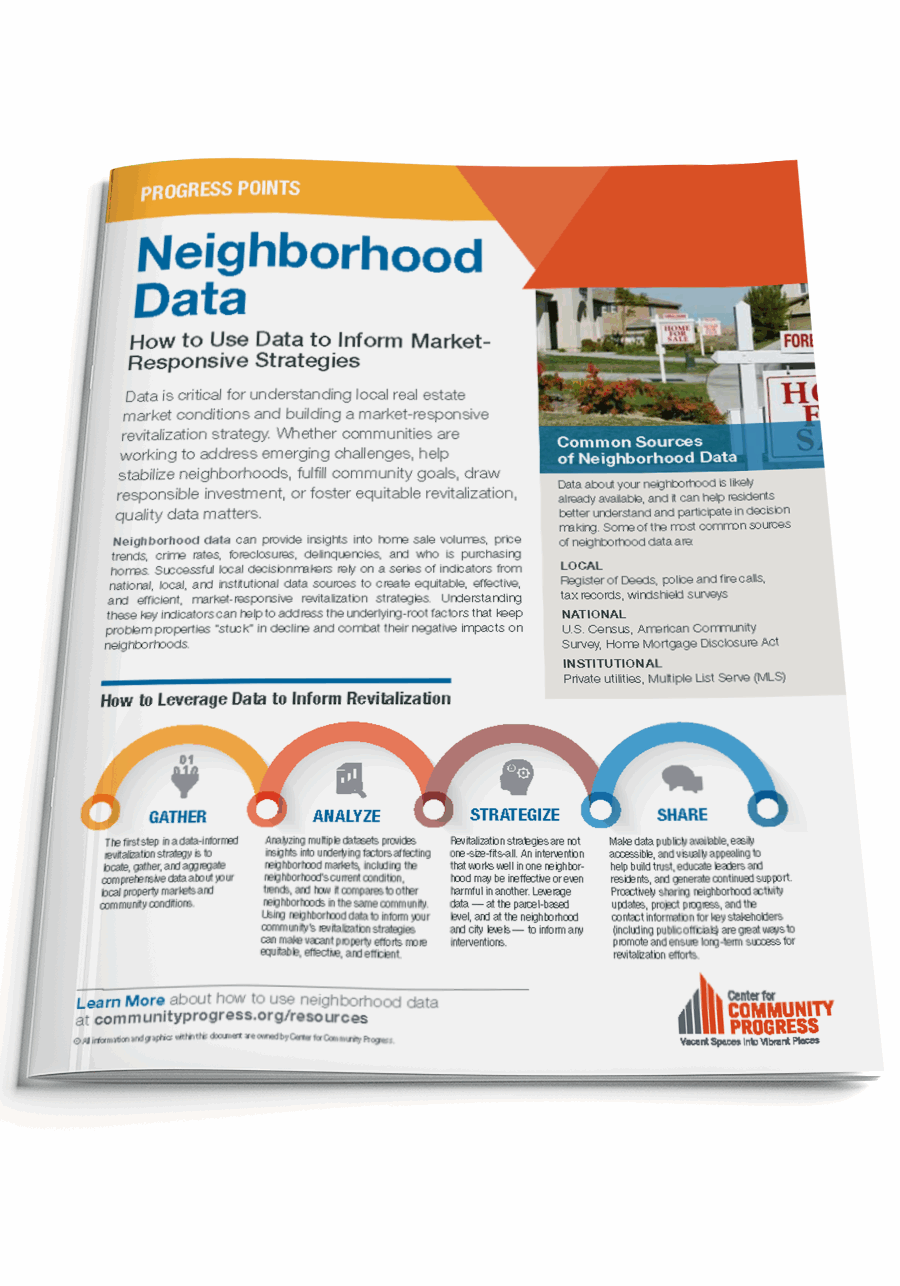Progress Points: Neighborhood Markets and Data
A Brief Primer
Topic(s): Parcel Data & Neighborhood Markets
Published: January 2022
Geography: United States
Author(s): Center for Community Progress
Data is critical for understanding local real estate market conditions and building a market-responsive revitalization strategy. Whether communities are working to address emerging challenges, help stabilize neighborhoods, fulfill community goals, draw responsible investment, or foster equitable revitalization, quality data matters.
Neighborhood data can provide insights into home sale volumes, price trends, crime rates, foreclosures, delinquencies, and who is purchasing homes. Successful local decisionmakers rely on a series of indicators from national, local, and institutional data sources to create equitable, effective, and efficient, market-responsive revitalization strategies. Understanding these key indicators can help to address the underlying-root factors that keep problem properties “stuck” in decline and combat their negative impacts on neighborhoods.
Aspects of local real estate markets
A neighborhood’s real estate market includes a combination of property characteristics, prices, owners, and interested buyers (including individuals and investors). When developing a comprehensive market-responsive strategy to revitalization it is important to understand the following aspects of the local real estate markets:
Recognize Every Neighborhood is Unique: Local leaders must have an understanding of neighborhood markets in order to develop strategies that will be responsive to each neighborhood’s unique needs and market conditions rather than deploying a one-size fits all approach across a municipality.
Gather, Analyze, and Interpret Data: Market realities change neighborhood by neighborhood and even block by block. Data, including how much properties are selling for, to whom, and the condition of existing structures, is a critical component to understanding a neighborhood’s market.
Develop a Strategy with a Focus on Equity: Creating a market-responsive strategy should never mean choosing to give all resources to places with stable markets and ignore distressed market neighborhoods. It is about providing the tools and resources that can effectively support community goals in that market. For example, employing affordability protections in rising markets and prioritizing home repair grants in distressed markets.
Download and share this one-page explainer today.

Topic(s): Parcel Data & Neighborhood Markets
Published: January 2022
Geography: United States
Related Publications
Other Related Content
Subscribe to join 14,000 community development leaders getting the latest resources from top experts on vacant property revitalization.
